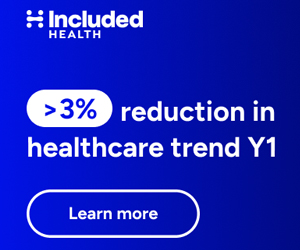
By KIM BELLARD
News flash: America is not a very happy place these days.
No, I’m not talking about the current political divide (which is probably more accurately described as a chasm), at least not directly. I’m referring to the latest results from the World Happiness Report, which found that the U.S. has slid to 24th place in the world, its lowest position ever. We were 11th in 2011, the first such report.
Nordic countries scored the highest yet again, taking half of the top ten counties, with Finland repeating for the eighth year in a row as the happiest country. America’s nearest neighbors Mexico (10th) and Canada (18th) are happier places, tariffs or not.
The researchers declare: “Belief in the kindness of others is much more closely tied to happiness than previously thought.” They specifically cite the belief that others would return a lost wallet is a strong predictor of a country’s happiness, while noting that such returns are twice as likely as people believe them to be.
John F. Helliwell, an economist at the University of British Columbia, a founding editor of the World Happiness Report, said:
The wallet data are so convincing because they confirm that people are much happier living where they think people care about each other. The wallet dropping experiments confirm the reality of these perceptions, even if they are everywhere too pessimistic.
The U.S., as it turned out, ranked only 52nd in believing a stranger would return a lost wallet, and even only 25th that the police would. We were slightly more optimistic (17th) that our neighbors would.
Sharing meals with others is also strongly linked to happiness. “The extent to which you share meals is predictive of the social support you have, the pro-social behaviors you exhibit and the trust you have in others,” Jan-Emmanuel De Neve, a University of Oxford professor and an author of the report, told The New York Times.
Unfortunately, the number of people dining alone in the U.S. has increased 53% over the past two decades. According to the Ajinomoto Group, among American adults under 25, it has jumped 80%.
Young Americans are helped drive our dismal results generally. “The decline in the U.S. in 2024 was at least partly attributable to Americans younger than age 30 feeling worse about their lives,” Ilana Ron-Levey, managing director at Gallup, told CNN. “Today’s young people report feeling less supported by friends and family, less free to make life choices and less optimistic about their living standards.”
Eighteen percent (18%) of young U.S. adults (18-29) report not having anyone they feel close to, the highest of all the U.S. age groups, and those same young adults also have lower quality of connections than older U.S. respondents. The report speculates: “Although not definitive, this provides intriguing preliminary evidence that relatively low connection among young people might factor into low wellbeing among young Americans.”
In fact, if the U.S. was measured just by the happiness of our young adults, we wouldn’t even rank in the top 60 countries. “It is really disheartening to see this, and it links perfectly with the fact that it’s the well-being of youth in America that’s off a cliff, which is driving the drop in the rankings to a large extent,” Professor De Neve said.
Continue reading…
 What do employers want more than anything? Healthy, engaged, productive, energized, and thriving employees who provide great customer service and high quality products. What they have is all too often the antithesis of that.
What do employers want more than anything? Healthy, engaged, productive, energized, and thriving employees who provide great customer service and high quality products. What they have is all too often the antithesis of that.









